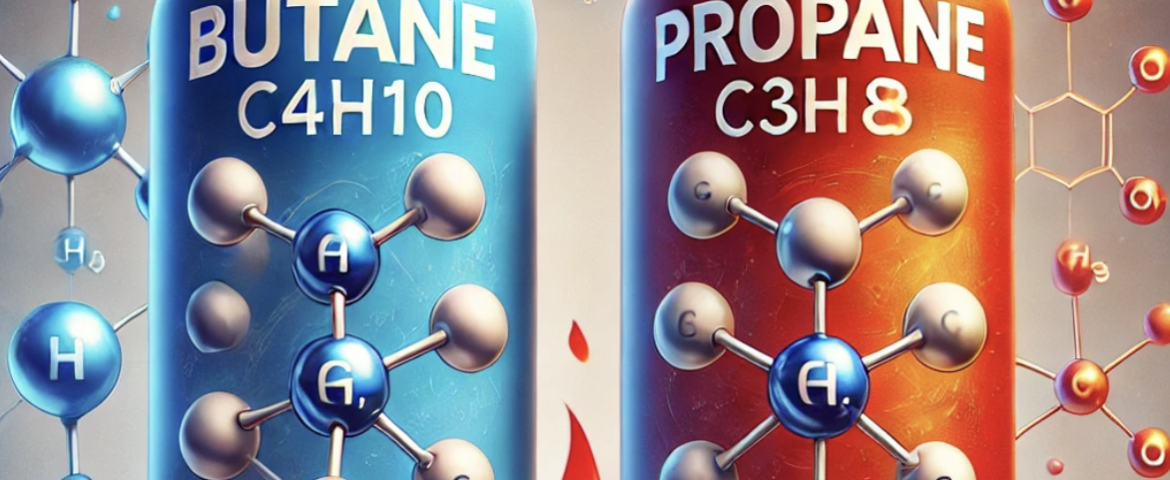Cooking gas, popularly referred to as Liquefied Petroleum Gas (LPG), is a prime energy source for millions of households and companies throughout the world. LPG comprises mainly two hydrocarbon gases-butane (C4H10) and propane (C3H8)-wherein the proportions of these gases are mixed suitably for optimizing performance, safety, and efficiency. Such combination of butane and propane in LPG does not happen at random; it is blended in order to obtain an optimum balance among energy output, vaporization characteristics, and the versatility in terms of different environmental conditions. The article examines the reasons for mixing butane and propane in the cooking gas.

Understanding Butane and Propane
Before understanding the necessity for mixing these gases, it is imperative to grasp their respective characteristics:
Butane (C4H10): A hydrocarbon gas that is very efficient in energy conversion, but with low vapor pressure render it difficult to vaporize at low temperatures. It liquefies easily and is used in warm climates.
Propane (C3H8): A lighter hydrocarbon having a higher vapor pressure, which allows it to efficiently vaporize under extremely low temperature conditions. This is also why propane is very popular in the colder regions of the world, where it remains in gaseous form under a variety of conditions.
Mixing these gases helps to enhance the performance, safety, and usability of the fuel.
Reasons for Mixing Butane and Propane
- Improved Vaporization and Performance in a Range of Temperatures
The foremost reason for mixing the two gases is for the gas to perform its function in all weather conditions. Butane by itself tends to be unable to vaporize in cold temperatures, leading to inefficient combustion or even flame failure. Propane, on the other hand, will remain in its gaseous state even in freezing conditions, thus providing a reliable fuel source during any season. Mixing butane with propane also provides for a fuel whose properties are usable in warmer tropical regions as well as in cold climates.
- The Energy Efficiency Has Been Optimized
Both propane and butane possess significantly high energy potential, and yet they differ slightly in terms of combustion behavior. Butane has a high calorific value per unit volume than propane, therefore it can generate more heat during combustion. However, since at cold temperatures butane vaporizes less effectively, propane is used in the mixing. Hence, this mixture will guarantee that whatever temperatures prevail, the fuel user will obtain maximum energy output and efficiency.
- Improved Storage and Transportation Efficiency
Butane can liquefy under much more moderate pressure than propane. Nevertheless, it is easier to be stored or transported in liquid state under moderate pressure. However, if it would be solely used as a fuel, problems may arise with its vaporization into gas as it fails to use it under cold temperatures. Propane fails to do so in lower temperatures as it remains gaseous. Hence, the LPG supply will be accessible even in winter through its mixture with butane. Thus, a supplier has come up with fuels that are easy to store, transport, and even use without compromising their efficiencies.
- Safety
Safety is a major concern when using any kind of fuel and hence a balanced proportion of butane and propane does not lead to extreme pressure buildup which reduces the chances of leaks and explosions. A tank using only propane would have to operate at much higher pressure thus, leading to increased chances of accidents. Using pure butane leads to problems in case of operation in cold weather conditions. A balanced proportion provides a much safer as well as more stable gaseous mixture for the consumers.
- Economical
Economic reasons also influence the combination of butane and propane. Butane is much less expensive to both produce and distribute than propane. Indeed, in the event of an increase in the market price of propane, suppliers will simply modify the mix ratio to incorporate more butane in order to keep the cost of LPG relatively stable for the consumer. This ensures that flexibility is added to blending while seeking possible cost optimization without much change in the quality of performance.
- Environmental Benefits
LPG is one of the fossil fuels that have been proven to be comparatively cleaner in terms of emissions. A well-balanced mixture of propane and butane ensures complete combustion, which will lead to the release of comparatively lower amounts of CO and unburnt hydrocarbons into the atmosphere. This does add to better air quality but also enhances fuel efficiency to a greater extent, thus giving it the favor of the better option for cooking and heating.
Typical LPG Mixtures in Different Regions
LPG compositions vary with geographical and climatic condition. The following are the typical compositions that are considered: Those from tropical and hot regions will have higher butane content as, in these regions, there will be no concern regarding low temperatures (e.g. 70% butane and 30% propane). The formulation that will have a higher ratio of propane in colder climates will be like 60% propane and 40% butane. This is to ensure good reliable vaporization. Domestic purpose usage covers also balanced mixtures like 50:50 proportions of propane and butane, to ensure balanced application across various different conditions of weather.
Conclusion
Combining butane and propane in cooking gas is neither arbitrary nor scientifically random, but rather a calculated jury of merits based on performance, safe operation, and efficiency. Propane provides better vaporization at low temperatures, while butane will take care of energy output and cost-effectiveness. Combined, the two will produce an optimized LPG mixture that can be used in most climates and applications. Balancing these gases ensures the consumption of a reliable, affordable, safe cooking fuel by consumers in any and all environments.

